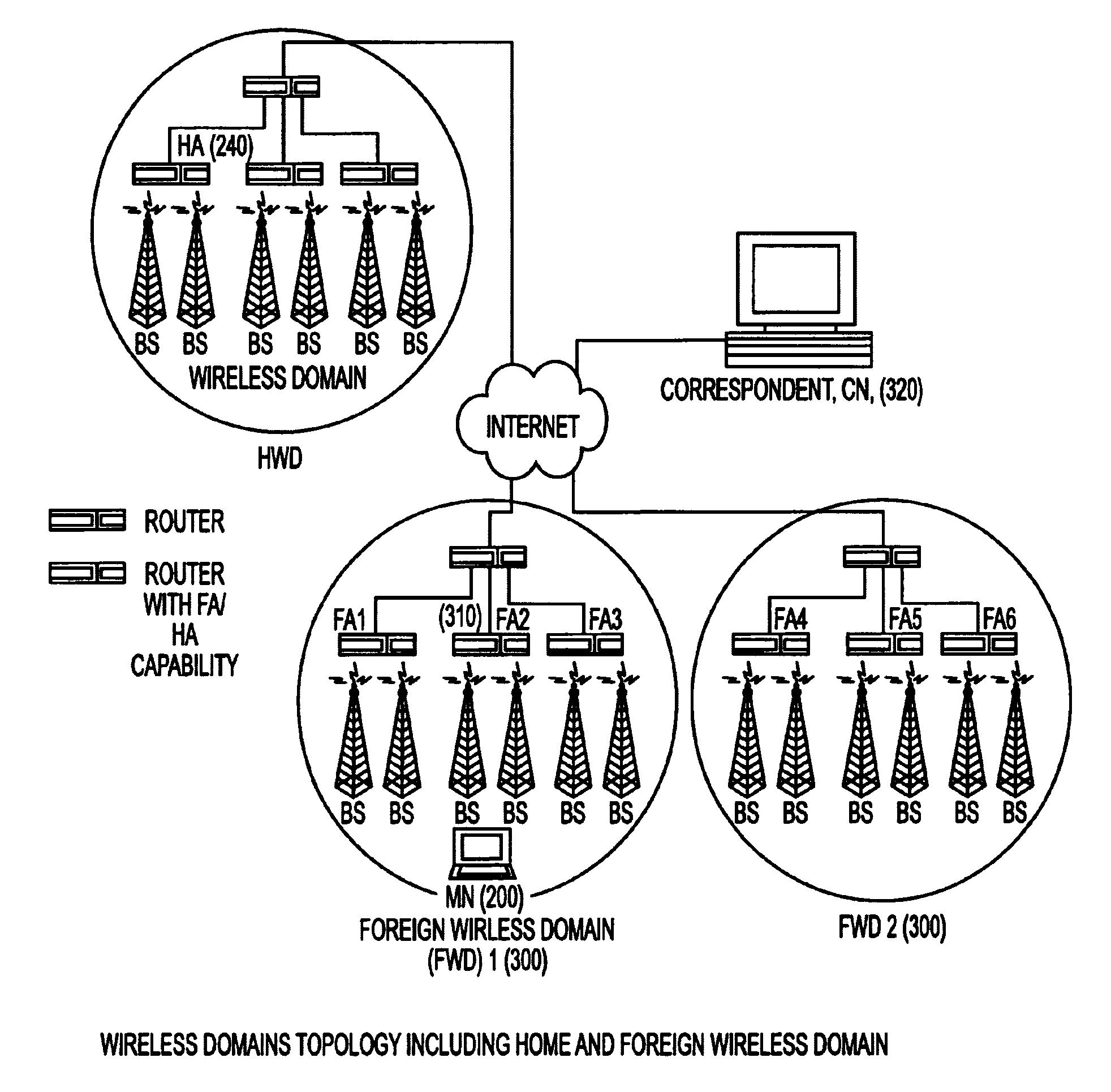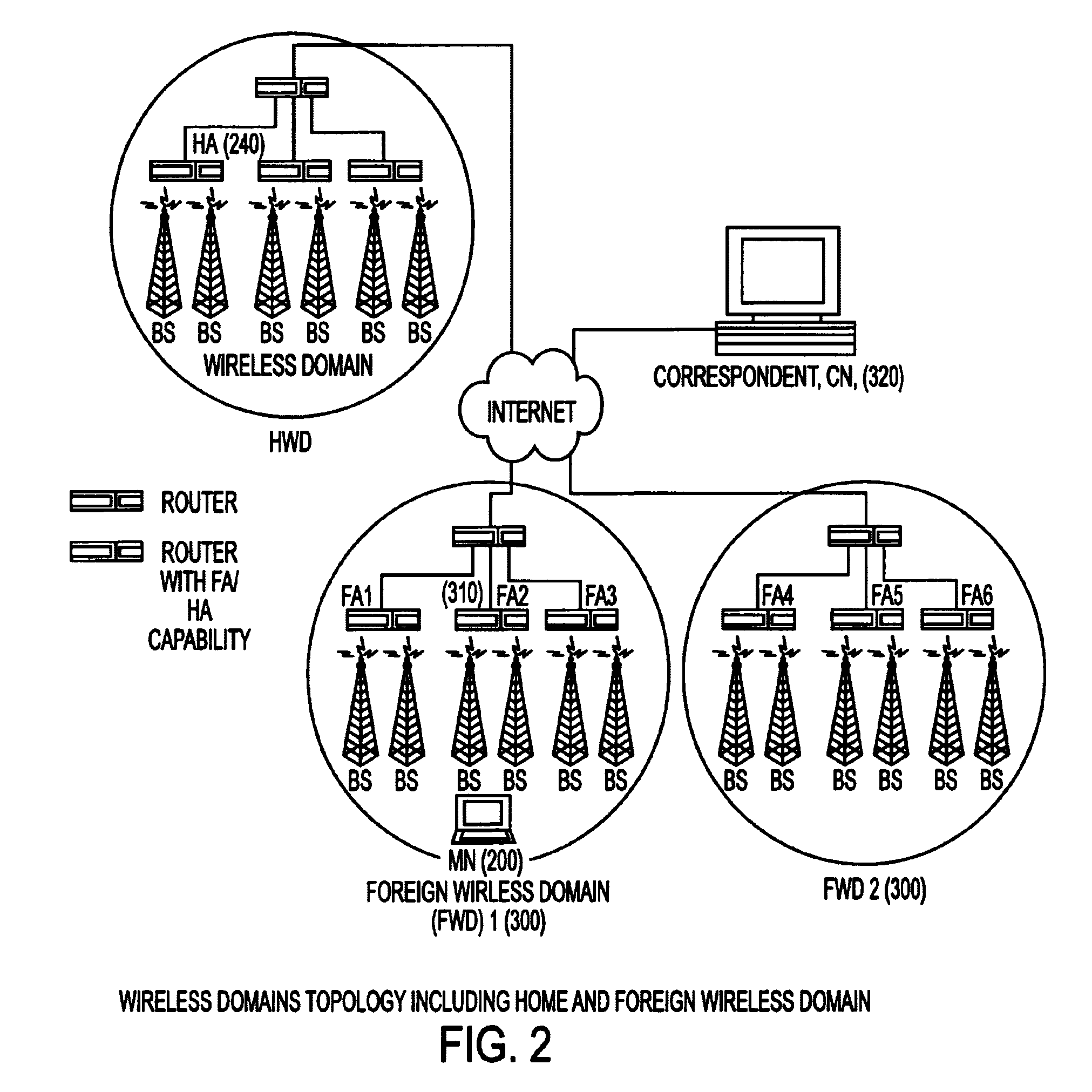Simple multicast extension for mobile IP SMM
a multicast extension and mobile ip technology, applied in the field of wireless communication, can solve the problems of lost connection made with the previous address, inaccessible, and inability to reach the mobile host,
- Summary
- Abstract
- Description
- Claims
- Application Information
AI Technical Summary
Problems solved by technology
Method used
Image
Examples
Embodiment Construction
[0078]The Simple Multicast Extension for Mobile IP (SMM) is more than a modification in the Mobile IP protocol principle. Instead, it represents an improvement since it uses extensions inside the Mobile IP. As a result, SMM is almost completely transparent to the mobile node because it has to only remember its multicast address and join the multicast group while performing a handoff.
Make Before Break
[0079]In a preferred embodiment, the present invention can support a “make before break” scheme if the SMM protocol is associated with a “movement detection” mechanism. Under the “make before break scheme,” a new circuit (or path) to the mobile is created before breaking the old one. This principle is useful for voice communication. Having such a feature is an advantage over existing systems. Furthermore, it can work with existing “movement detection” mechanisms commonly used, like the beacon detection. Also, it can work with the “make before break” principle used in the Global System fo...
PUM
 Login to View More
Login to View More Abstract
Description
Claims
Application Information
 Login to View More
Login to View More - R&D
- Intellectual Property
- Life Sciences
- Materials
- Tech Scout
- Unparalleled Data Quality
- Higher Quality Content
- 60% Fewer Hallucinations
Browse by: Latest US Patents, China's latest patents, Technical Efficacy Thesaurus, Application Domain, Technology Topic, Popular Technical Reports.
© 2025 PatSnap. All rights reserved.Legal|Privacy policy|Modern Slavery Act Transparency Statement|Sitemap|About US| Contact US: help@patsnap.com



